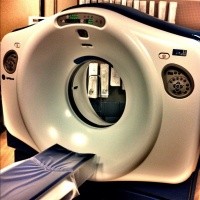Author Interviews, Cancer Research, JAMA, Nutrition / 23.10.2018
Can an Organic Diet Reduce Cancer Risk?
MedicalResearch.com Interview with:
 Julia Baudry &
Emmanuelle Kesse-Guyot PhD
Centre de Recherche Epidémiologie et Statistique Sorbonne Paris Cité, Institut National de la Santé et de la Recherche Médicale (INSERM) U1153, Institut National de la Recherche
MedicalResearch.com: What is the background for this study? What are the main findings?
Response: Among the environmental risk factors for cancer, there are concerns about exposure to different classes of pesticides, notably through occupational exposure. Organic foods are less likely to contain pesticide residues than conventional foods, and studies have showed that an organic diet reduces exposure to certain pesticides (Baudry et al 2018, Oates et al 2014, Curl et al 2015). In the general population, the primary route of exposure is diet, especially intake of conventionally grown fruits and vegetables. However, few studies have examined the association of organic food consumption with cancer risk.
In a population of 68 946 French adults from the NutriNet-Santé study, we found a reduction of 25% of cancer risk among consumers with a high frequency of organic foods compared to consumers with a low frequency, after accounting for many factors (such as lifestyle, diet and sociodemographic factors). Specifically a 34% and 76% decrease in risk was observed for post-menopausal breast cancer and all lymphomas, respectively, among frequent organic food consumers compared to consumers with a low organic food consumption frequency.
(more…)
Julia Baudry &
Emmanuelle Kesse-Guyot PhD
Centre de Recherche Epidémiologie et Statistique Sorbonne Paris Cité, Institut National de la Santé et de la Recherche Médicale (INSERM) U1153, Institut National de la Recherche
MedicalResearch.com: What is the background for this study? What are the main findings?
Response: Among the environmental risk factors for cancer, there are concerns about exposure to different classes of pesticides, notably through occupational exposure. Organic foods are less likely to contain pesticide residues than conventional foods, and studies have showed that an organic diet reduces exposure to certain pesticides (Baudry et al 2018, Oates et al 2014, Curl et al 2015). In the general population, the primary route of exposure is diet, especially intake of conventionally grown fruits and vegetables. However, few studies have examined the association of organic food consumption with cancer risk.
In a population of 68 946 French adults from the NutriNet-Santé study, we found a reduction of 25% of cancer risk among consumers with a high frequency of organic foods compared to consumers with a low frequency, after accounting for many factors (such as lifestyle, diet and sociodemographic factors). Specifically a 34% and 76% decrease in risk was observed for post-menopausal breast cancer and all lymphomas, respectively, among frequent organic food consumers compared to consumers with a low organic food consumption frequency.
(more…)
 Julia Baudry &
Emmanuelle Kesse-Guyot PhD
Centre de Recherche Epidémiologie et Statistique Sorbonne Paris Cité, Institut National de la Santé et de la Recherche Médicale (INSERM) U1153, Institut National de la Recherche
MedicalResearch.com: What is the background for this study? What are the main findings?
Response: Among the environmental risk factors for cancer, there are concerns about exposure to different classes of pesticides, notably through occupational exposure. Organic foods are less likely to contain pesticide residues than conventional foods, and studies have showed that an organic diet reduces exposure to certain pesticides (Baudry et al 2018, Oates et al 2014, Curl et al 2015). In the general population, the primary route of exposure is diet, especially intake of conventionally grown fruits and vegetables. However, few studies have examined the association of organic food consumption with cancer risk.
In a population of 68 946 French adults from the NutriNet-Santé study, we found a reduction of 25% of cancer risk among consumers with a high frequency of organic foods compared to consumers with a low frequency, after accounting for many factors (such as lifestyle, diet and sociodemographic factors). Specifically a 34% and 76% decrease in risk was observed for post-menopausal breast cancer and all lymphomas, respectively, among frequent organic food consumers compared to consumers with a low organic food consumption frequency.
(more…)
Julia Baudry &
Emmanuelle Kesse-Guyot PhD
Centre de Recherche Epidémiologie et Statistique Sorbonne Paris Cité, Institut National de la Santé et de la Recherche Médicale (INSERM) U1153, Institut National de la Recherche
MedicalResearch.com: What is the background for this study? What are the main findings?
Response: Among the environmental risk factors for cancer, there are concerns about exposure to different classes of pesticides, notably through occupational exposure. Organic foods are less likely to contain pesticide residues than conventional foods, and studies have showed that an organic diet reduces exposure to certain pesticides (Baudry et al 2018, Oates et al 2014, Curl et al 2015). In the general population, the primary route of exposure is diet, especially intake of conventionally grown fruits and vegetables. However, few studies have examined the association of organic food consumption with cancer risk.
In a population of 68 946 French adults from the NutriNet-Santé study, we found a reduction of 25% of cancer risk among consumers with a high frequency of organic foods compared to consumers with a low frequency, after accounting for many factors (such as lifestyle, diet and sociodemographic factors). Specifically a 34% and 76% decrease in risk was observed for post-menopausal breast cancer and all lymphomas, respectively, among frequent organic food consumers compared to consumers with a low organic food consumption frequency.
(more…)







 Dr. Janey Pratt, MD
Clinical Associate Professor, Surgery
Stanford University
MedicalResearch.com: What is the background for this study? What are the main findings?
Response: In 2013 obesity became recognized as a disease. The rate of pediatric obesity continues to rise. Severe pediatric obesity is rising at a even faster rate than obesity in pediatrics. Despite this Metabolic and Bariatric Surgery (MBS) remains underutilized in the treatment of severe pediatric obesity. There is a significant amount of adult data and now pediatric data about effective treatments for severe obesity. These support the use of MBS as a primary treatment for severe obesity in children. (BMI > 120% of 95th percentile with a comorbidity or BMI > 140% of 95th percentile).
Dr. Janey Pratt, MD
Clinical Associate Professor, Surgery
Stanford University
MedicalResearch.com: What is the background for this study? What are the main findings?
Response: In 2013 obesity became recognized as a disease. The rate of pediatric obesity continues to rise. Severe pediatric obesity is rising at a even faster rate than obesity in pediatrics. Despite this Metabolic and Bariatric Surgery (MBS) remains underutilized in the treatment of severe pediatric obesity. There is a significant amount of adult data and now pediatric data about effective treatments for severe obesity. These support the use of MBS as a primary treatment for severe obesity in children. (BMI > 120% of 95th percentile with a comorbidity or BMI > 140% of 95th percentile).








 Kathryn M. Edwards, M.D.
Sarah H. Sell and Cornelius Vanderbilt Chair in Pediatrics
Professor of Pediatrics
Vanderbilt University School of Medicine
Dr. Edwards discusses the statement from the Infectious Diseases Society of America (IDSA) regarding the Centers for Disease Control and Prevention’s new data on child vaccine rates across the United States.
MedicalResearch.com: What is the background for this study? What are the main findings?
Response: To monitor the uptake of vaccines the CDC conducts a National Immunization Survey each year. This survey is conducted by random-digit dialing (cell phones or landlines) of parents and guardians of children 19-35 months of age. The interviewers ask the families who provides the vaccines for their children and if these providers can be contacted to inquire about the immunizations received. The overall response rate to the telephone survey was 26% and immunization records were provided on 54% of the children where permission was granted. Overall 15, 333 children had their immunization records reviewed.
When comparing immunization rates for 2017 and 2016, the last two years of the study, several new findings were discovered.
First the overall coverage rate for 3 doses of polio vaccine, one dose of MMR, 3 doses of Hepatitis b, and 1 dose of chickenpox vaccine was 90%, a high rate of coverage. Children were less likely to be up to date on the hepatitis A vaccine (70%) and rotavirus vaccine (73%). Coverage was lower for children living in rural areas when compared with urban areas and children living in rural areas had higher percentages of no vaccine receipt at all (1.9%) compared with those living in urban areas (1%).
There were more uninsured children in 2017 at 2.8% and these children had lower immunization rates. In fact 7.1% of the children with no insurance were totally unimmunized when compared with 0.8% unimmunized in those with private insurance. Vaccine coverage varies by state and by vaccine.
Kathryn M. Edwards, M.D.
Sarah H. Sell and Cornelius Vanderbilt Chair in Pediatrics
Professor of Pediatrics
Vanderbilt University School of Medicine
Dr. Edwards discusses the statement from the Infectious Diseases Society of America (IDSA) regarding the Centers for Disease Control and Prevention’s new data on child vaccine rates across the United States.
MedicalResearch.com: What is the background for this study? What are the main findings?
Response: To monitor the uptake of vaccines the CDC conducts a National Immunization Survey each year. This survey is conducted by random-digit dialing (cell phones or landlines) of parents and guardians of children 19-35 months of age. The interviewers ask the families who provides the vaccines for their children and if these providers can be contacted to inquire about the immunizations received. The overall response rate to the telephone survey was 26% and immunization records were provided on 54% of the children where permission was granted. Overall 15, 333 children had their immunization records reviewed.
When comparing immunization rates for 2017 and 2016, the last two years of the study, several new findings were discovered.
First the overall coverage rate for 3 doses of polio vaccine, one dose of MMR, 3 doses of Hepatitis b, and 1 dose of chickenpox vaccine was 90%, a high rate of coverage. Children were less likely to be up to date on the hepatitis A vaccine (70%) and rotavirus vaccine (73%). Coverage was lower for children living in rural areas when compared with urban areas and children living in rural areas had higher percentages of no vaccine receipt at all (1.9%) compared with those living in urban areas (1%).
There were more uninsured children in 2017 at 2.8% and these children had lower immunization rates. In fact 7.1% of the children with no insurance were totally unimmunized when compared with 0.8% unimmunized in those with private insurance. Vaccine coverage varies by state and by vaccine. 







 Dr. Nicole Karcher, PhD
Post-doctoral scholar with the NIMH Training in Clinical Sciences fellowship
Department of Psychiatry
Washington University School of Medicine
MedicalResearch.com: What is the background for this study? What are the main findings?
Response: For over fifteen years, researchers have debated the role that cannabis use plays in the development of both psychotic disorders as well as subthreshold psychotic symptoms, such as psychotic-like experiences (PLEs). There is still a lack of consensus regarding the nature of the association between cannabis use and psychosis risk, with some research finding evidence for genetic overlap, while other research finds evidence for potentially causal pathways.
The current study examined data from twins and siblings from two different samples, the U.S.-based Human Connectome Project and the Australian Twin Registry, with a total of 4,674 participants. Overall, psychotic-like experiences were associated with three separate cannabis use variables [frequent (≥100 times) use, a Cannabis Use Disorder diagnosis, and current cannabis use]. Furthermore, the current research found evidence for both shared genetic and individual-specific contributions to the association between PLEs and these three cannabis use variables. More specifically, while the association between cannabis use and psychotic-like experiences was largely attributable to shared genetic factors, cannabis users were more likely to endorse PLEs in comparison to the relative who used cannabis less.
Dr. Nicole Karcher, PhD
Post-doctoral scholar with the NIMH Training in Clinical Sciences fellowship
Department of Psychiatry
Washington University School of Medicine
MedicalResearch.com: What is the background for this study? What are the main findings?
Response: For over fifteen years, researchers have debated the role that cannabis use plays in the development of both psychotic disorders as well as subthreshold psychotic symptoms, such as psychotic-like experiences (PLEs). There is still a lack of consensus regarding the nature of the association between cannabis use and psychosis risk, with some research finding evidence for genetic overlap, while other research finds evidence for potentially causal pathways.
The current study examined data from twins and siblings from two different samples, the U.S.-based Human Connectome Project and the Australian Twin Registry, with a total of 4,674 participants. Overall, psychotic-like experiences were associated with three separate cannabis use variables [frequent (≥100 times) use, a Cannabis Use Disorder diagnosis, and current cannabis use]. Furthermore, the current research found evidence for both shared genetic and individual-specific contributions to the association between PLEs and these three cannabis use variables. More specifically, while the association between cannabis use and psychotic-like experiences was largely attributable to shared genetic factors, cannabis users were more likely to endorse PLEs in comparison to the relative who used cannabis less. 







